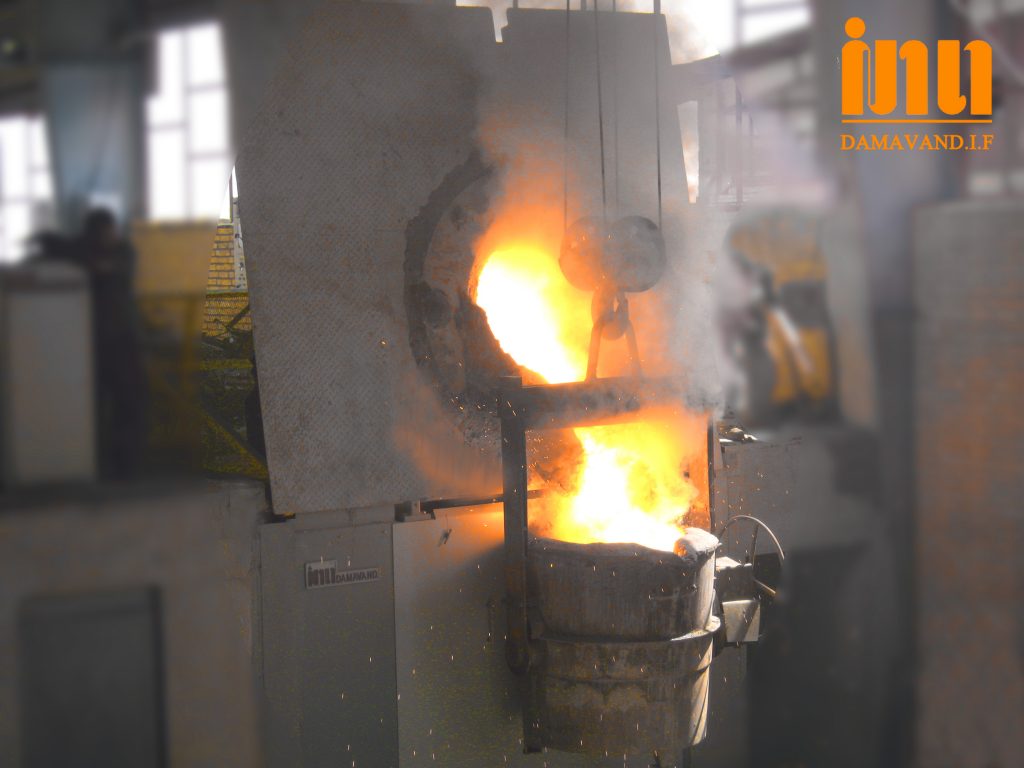
The heart of induction furnace, is the heating coil. This coil is a copper tube which is wound into a helical coil. This heavy duty tube has a hollow section made by high conductivity copper. There are shielding magnetic cores surrounding the coil. They act as a concentrator and prevents magnetic flux generated by the heating coil to distribute in the space. Steel shell contains coil and magnetic concentrators, and has several windows for visiting the coil. To protect the coil from overheating, it is water-cooled. This water is circulated and cooled in the cooling tower or heat exchanger, depending on the type of cooling system. The furnace tilts to facilitate pouring the molten metal in the ladle. Shell is supported on trunnions on which this action happens. There should be a refractory layer between the heating coil and molten metal. There are different types of ramming masses which can be used to isolate molten metal from heating coil. A hollow internal steel former is used for sintering purposes. This former heats up in the magnetic field and provides heating required for sintering the refractory layer. It melts away when sintering process completes and leaves a sintered lining.
A stirring action takes place in the molten metal due to interactions between the magnetic field and induced currents in molten metal. This phenomena forces the molten metal to rise upwards in the center and form a meniscus on the surface of the metal. There are several factors, influencing the degree of stirring phenomena:
- Power and frequency applied to the coil
- Shape and size of the coil
- Density and viscosity of molten metal

The stirring phenomena plays a vital role in the bath regarding to metallurgical considerations as it helps with mixing of added ferro alloys and carbon into the metal, improving steel-making process. Stirring also helps homogenizing of the temperature throughout the furnace. Nevertheless, frequency should not be too low as this may lead to excessive stirring causing increase gas pick up, lining wear and oxidation of alloys.
Induction furnace is an ideal choice for remelting and alloying due to high control ability on temperature and chemistry beside good circulation of molten metal.


